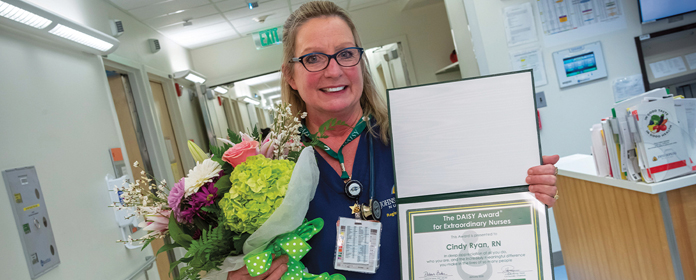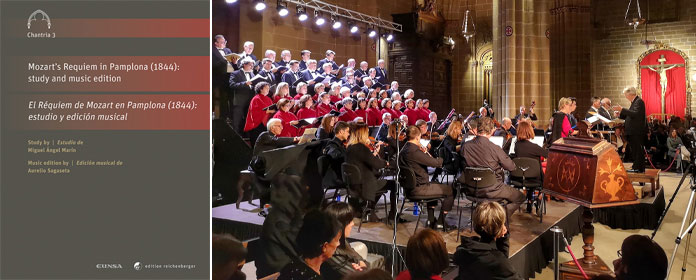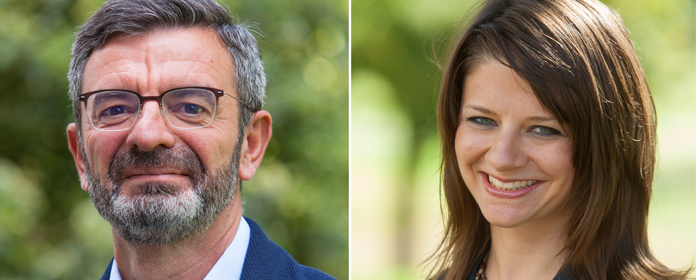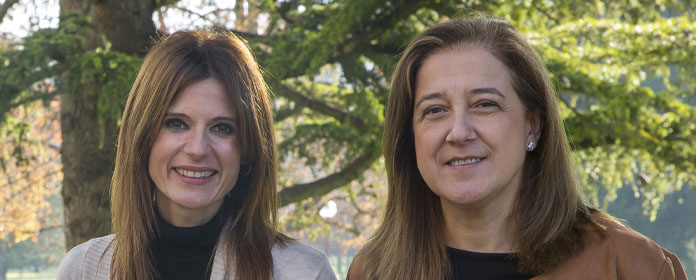Focusing on new technologies at museums for the conservation and dissemination of cultural heritage
The ICS’s Creativity and Cultural Heritage project organized a conference with experts from the Museum of Navarra, Gnoss, Museo Reina Sofía and Centro Botín
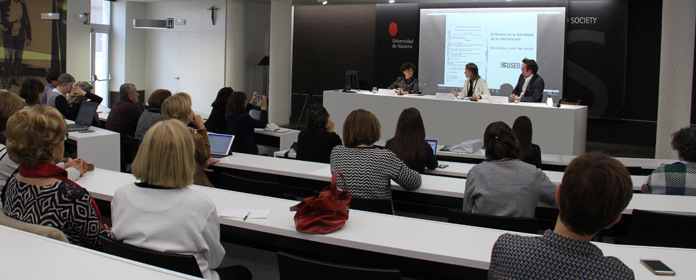
FOTO: Natalia Rouzaut
Museums resort to new technologies with increasing frequency to underscore the rich heritage they maintain and bring it closer to the public. A conference organized by the Creativity and Cultural Heritage project at the Institute for Culture and Society (ICS) of the University of Navarra brought together four experts from Gnoss, the Museum of Navarra, the Reina Sofía Museum and the Botín Center to discuss this issue and better understand how their institutions are managing it.
"It is about preserving and studying cultural heritage in order to integrate the demands of today's society and the real value of that heritage, engendering interaction between them beyond turning cultural heritage into a mere object of consumption at the service of tourism," Julia Pavón, the project’s principal investigator, affirmed.
Mercedes Jover, director of the Museum of Navarra, gave the first presentation and reflected on “The Museum in the information society.” She reviewed the origin of museums with the phenomenon of collecting and their evolution starting from the Middle Ages, through the Renaissance, Enlightenment, and to the current era.
She noted that the Museum is currently reviewing its facilities and permanent exhibition with the motto “All art is contemporary.” The institution seeks to make the leap to the twenty-first century. The museum’s pieces have been hung in a single timeline to focus on how different works and artists interpret themes that are key for humanity.
She also indicated that both its exhibited and warehoused artworks are available to the public online.
Ricardo Alonso gave the next presentation. He is CEO of Gnoss, a technology company that builds and takes advantage of knowledge graphs by applying semantic technologies. In his talk, “Museums and metamuseums: Art in the era of digital reproducibility,” he spoke about the The Prado Museum on the web project, a new model for digital museography through which all of the institution’s content is now accessible online.
Gnoss presented a knowledge graph of the Prado Museum’s heritage that links works of art and artists with other assets, such as the encyclopedia or the archive. It hopes the public will be able to access this information in a personalized way.
According to Alonso, the project responds to the idea that museums, like any other institution "are conversations," which have developed more symmetrically in the Internet era than in the past. He argues that this obliges museums to differentiate publics and speak to each of them according to their particular interests.
Rethinking GuernicaOlga Sevillano Pintado then presented. She is responsible for the Reina Sofía National Art Center Museum’s virtual programs, and presented on “Processes and functions in the digital era.” She spoke about Rethinking Guernica, a website that collects and presents materials related to this famous painting that are currently part of the museum’s collection. She noted that the research on which it is based has taken more than two years and required interdisciplinary work (researchers, computer scientists, art historians, designers, etc.).
She also mentioned that the website contains about 2,000 documents from 120 public and private archives, institutions and national and international agencies, which can be accessed through a powerful search engine. She also stressed that the page is a work in progress as new documents, such as exhibition catalogs, correspondence, documentation internal to museums, newspapers, magazines, etc., are added.
“Guernica in gigapixel” is a prominent feature on this website; it groups and manages a large number of images of the painting’s surface, backside and frame.
Arts, emotions and creativityLastly, Fátima Sánchez Santiago presented. She is executive director of the Botín Center, which opened in 2017 at the impetus of the Botín Foundation. In her presentation, entitled “The Botín Center: Arts, emotions and creativity,” she spoke of how emotions can be an important part of creativity to the extent that tools such as art help generate and manage them properly.
This Center is developing a project, together with the Yale University, to research and study in detail the role of emotions in the creative process, generating a theoretical model that responds to how and why emotions impact human creativity. Their last step, she explained, will be applying this knowledge to various programs, activities and workshops.
As an example, she mentioned their activity on “Creative thinking strategies for life: A workshop for professional adults using art” and some of its results. For example, participants significantly improved their ability to come up with original ideas on tasks that involve divergent thinking and concerning problem analysis, as well as demonstrated more frequent creative behavior after completing the course.

